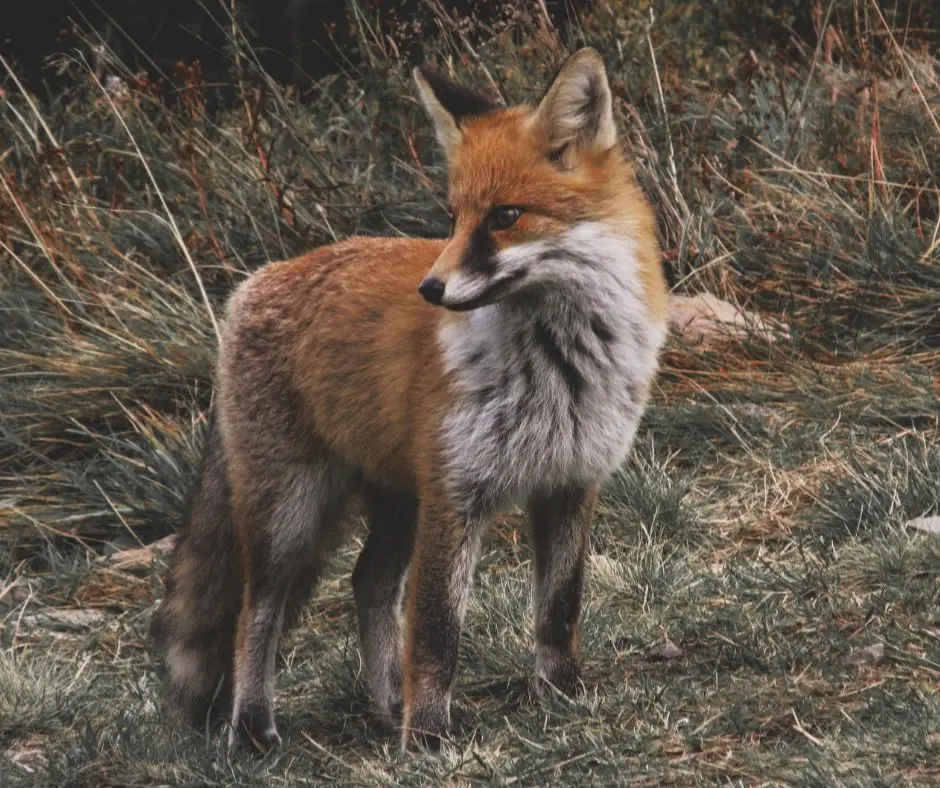
Kits begin to make their first tentative moves out of the den when they are about five weeks old, and when they are about nine weeks old, they abandon the den and start to live on the surface. When the kits are about three weeks old, they start consuming regurgitated food that their mother provides them. At about two weeks, the vixen leaves her kits alone in their den while she goes hunting. During this time, the male fox brings her food and regurgitates it to feed her. The vixen remains in the den for the first two weeks after the birth of her kits to feed and protect them. Male and female foxes form monogamous pairs during this time.Īfter a gestation period of approximately 53 days, the vixen gives birth to a litter of 4 to 6 blue-grey coloured babies, called kits. These social groups consist of a dominant male and female together and several subordinate females who don’t produce litters themselves but help rear the young of the dominant female instead.

Foxes generally form social groups only during the breeding season. Photo: Fox pups (also called kits or cubs)įemale foxes (vixens) mate once a year during the mating season, from mid-June to the end of July. In the case of larger prey, they may eat only the tail, ears, tongues, and internal organs, leaving the rest of the carcass uneaten. For example, they may eat only the head and neck of larger birds such as poultry. While it may consume small prey in their entirety, foxes can also be wasteful predators that leave large portions of their victims uneaten. With their quick reflexes, foxes kill by attacking the head and neck of their victim and inflicting several deep bites and punctures predominately around the neck. When hunting, they target animals under 5 kgs in weight. During times of food shortage, they are less discerning, eating whatever is available, including a large percentage of insects and plant matter. Insects and worms may constitute another 4%, and the remaining 1% may consist of fruit. When food is plentiful, 95% of a fox’s diet consists of meat, both hunted and scavenged, and mainly rabbits, rodents, birds, and small mammals. They consume about 0.5 kilograms of food each day. They set out individually on their hunting forays in the evening or early each morning. Foxes are highly adaptable opportunistic predators and scavengers with indiscriminate eating habits. They also eat domestic livestock such as poultry, lambs, goat kids, and deer fawns. Red foxes are hunted for sport, though not extensively, and are sometimes killed as destructive pests or frequent carriers of rabies.Foxes eat rabbits rodents, frogs, birds, insects, eggs, lizards, fruit and edible human waste. Both parents care for their young through the summer before they are able to strike out on their own in the fall. A new red coat usually grows in by the end of the first month, but some red foxes are golden, reddish-brown, silver, or even black. At birth, red foxes are actually brown or gray. The vixen (female) typically gives birth to a litter of 2 to 12 pups.

A fox uses its tail (or “brush”) as a warm cover in cold weather and as a signal flag to communicate with other foxes.įoxes also signal each other by making scent posts-urinating on trees or rocks to announce their presence. Like a cat's, the fox's thick tail aids its balance, but it has other uses as well. If living among humans, foxes will opportunistically dine on garbage and pet food. Foxes will eat fruit and vegetables, fish, frogs, and even worms. Red foxes are solitary hunters who feed on rodents, rabbits, birds, and other small game-but their diet can be as flexible as their home habitat. The red fox's resourcefulness has earned it a legendary reputation for intelligence and cunning. They also adapt well to human environments such as farms, suburban areas, and even large communities. Red foxes live around the world in many diverse habitats including forests, grasslands, mountains, and deserts.


 0 kommentar(er)
0 kommentar(er)
